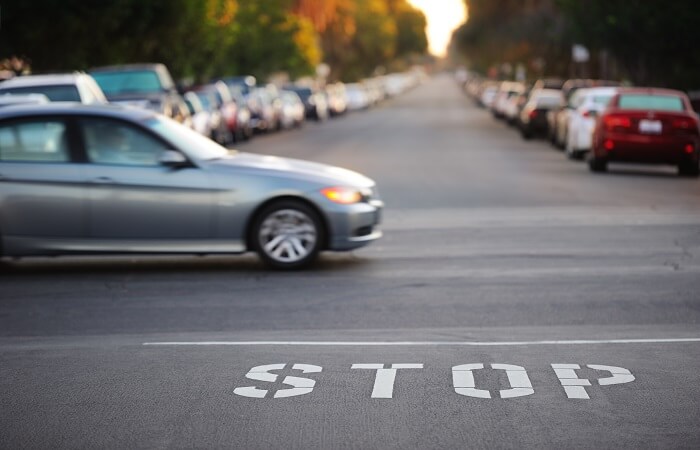When ‘Right of Way’ Doesn’t Matter
Situations on the road aren’t always clear; is your teen ready to react?
Situations on the road aren’t always clear; is your teen ready to react?

Picture this: a four-way intersection with stop signs at each corner. The driver who arrives first at the intersection can drive through after stopping first, then the next driver to arrive can drive through after them. The driver who arrived last doesn’t get to cross the intersection immediately just because they want to, there is an expected order.
This is ‘right of way’ and it is a crucial lesson for your teen to learn in order to stay safe. Why? Because situations on the road aren’t always as clear as the example above and drivers will often do things out of turn, whether it’s crossing an intersection, merging or turning. The best way for your teen to avoid a crash with these drivers is to never assume that they have the right of way.
Don’t make assumptions
Now, that may not sound fair, but ask your teen to picture that four-way intersection again: what would happen if another driver decided to cross while your teen was taking their turn? There is the potential for a crash, even though your teen may technically have the right of way. Unfortunately, your new teen driver will soon learn that just because the law says people should do things does not mean they will.
Even when driving down a one-way street, when your teen absolutely has the right of way, another driver might pull out in front of them. In that moment, it doesn’t matter who did or did not have the right of way, all that matters is whether your teen is prepared to react.
Always anticipate hazards
We talked about this recently on the topic of defensive driving; there will be plenty of times when, on paper, your teen will have the right of way, but that doesn’t mean they can assume it will stay that way. Instead, your teen must learn to anticipate driver behaviors.
You can help teach your teen this skill. When you are in the passenger seat and your teen is driving, scan the road for potentially dangerous drivers. Then, trade places and ask your teen to do the same and point these drivers out for you. The more your teen makes scanning the road a habit, the more hazards they’ll be able to avoid.
Be the ‘nice’ driver
Ultimately, the right of way comes down to being a ‘nice’ driver and it’s not always easy. Often, we want to rush off to somewhere, speed through a changing light or roll through a stop sign, but each of these actions can put your teen at risk. Instead, teach your teen to be the driver that we all want to encounter on the roads. The driver who lets us merge in a construction zone, not the one who cuts us off in traffic.
Driving this way will help your teen avoid the dreaded ‘road rage’ and give them more time to spot potential hazards. Patient drivers may not always get to their destination first, but they’ve got a better chance of making it there safe.
To learn more about right of way on the roads, take a look at our full lesson (including some extra dangers your teen has to look out for) and don’t forget to sign up for our Pointers for Parents so you’ll get lessons just like this emailed to you each week.
With a century-long legacy, the National Safety Council is a global center for safety expertise. Let's work together to align resources. We look forward to learning about ways we can join efforts to expand safety everywhere!
There are no items in your cart